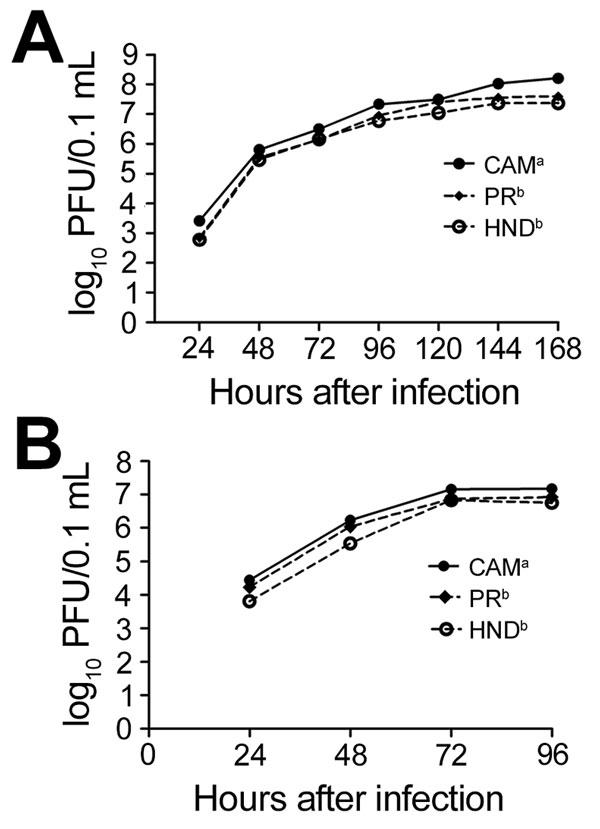Volume 23, Number 7—July 2017
Research
Effects of Zika Virus Strain and Aedes Mosquito Species on Vector Competence
Figure 1

Figure 1. Growth kinetics of Zika virus in A) mosquito (C6/36) and B) mammalian (Vero) cells. Cells were infected in duplicate with Zika virus strain CAM, PR, or HND, at a multiplicity of infection of 0.1. Concentration of Zika virus in supernatant was determined by plaque titration for 4 (Vero) or 7 (C6/36) days after infection. Values represent geometric means ± SD, and different superscript letters represent statistically different growth kinetics (repeated measures analysis of variance; p<0.05 by Tukey post hoc test).
Page created: June 19, 2017
Page updated: June 19, 2017
Page reviewed: June 19, 2017
The conclusions, findings, and opinions expressed by authors contributing to this journal do not necessarily reflect the official position of the U.S. Department of Health and Human Services, the Public Health Service, the Centers for Disease Control and Prevention, or the authors' affiliated institutions. Use of trade names is for identification only and does not imply endorsement by any of the groups named above.